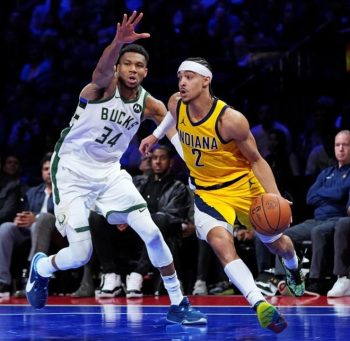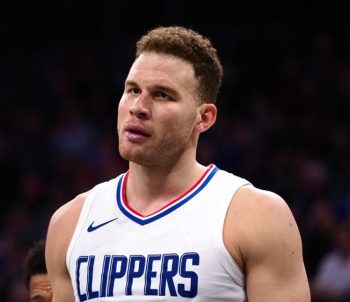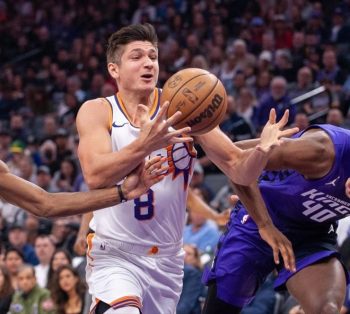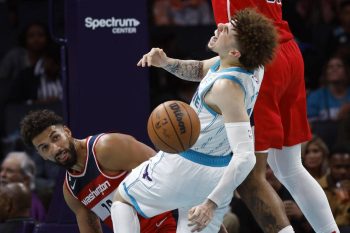NBA
NBA AM: Fixing The NBA Competitive Balance Problem
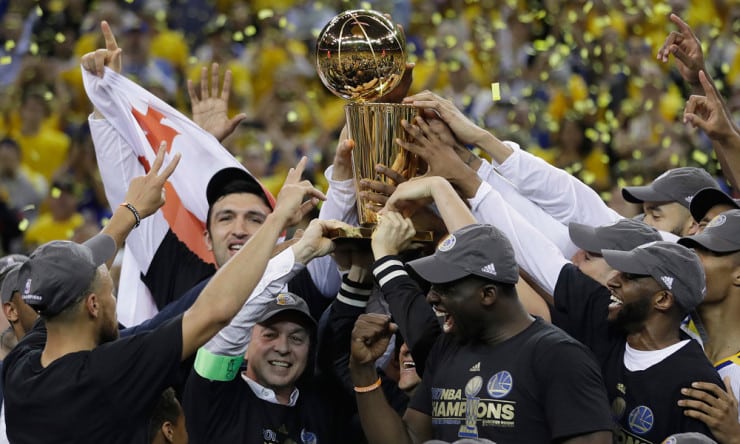
As the Golden State Warriors continue to re-load what will inevitably another Championship roster, is there anything the NBA can do going forward to help smooth out what’s becomes a pretty drastic competitive imbalance?
We asked some of our editors to weigh in on things the NBA should consider looking at or potentially changing to help solve this growing problem.
Playoff Seedings and Max Salaries
To some degree, the NBA will always be relatively top-heavy compared with other North American pro sports leagues. The top five to 10 players in the league are simply so valuable from a winning standpoint that the teams who have these players – and of course, any teams lucky to have two or more – will be at a huge advantage in the majority of cases.
Now, that doesn’t mean the league can’t take steps to still even things out more than they currently are. To do so, two areas would be particularly helpful: Removing conferences for playoff seeding (and perhaps altogether) and eliminating maximum player salaries.
A removal of conferences from playoff seeding, and therefore a move to a 1-16 format, could be implemented fairly quickly (hypothetically). It wouldn’t necessarily remove the inevitable reality that a few iffy teams would make the playoffs (that’s always going to happen every now and then when more than half the league’s teams make the postseason), but it could help in other areas. There’d be a better chance of the best teams advancing and facing each other in the more important rounds, rather than meeting earlier due to what’s clearly a serious conference imbalance.
Eliminating the maximum salary, and therefore allowing teams to spend whatever percentage of their overall cap space they desire on a single player, is a bit more of a radical solution. There’s no question it would have major ramifications across the league – including to players who come nowhere close to qualifying for the max. But from a parity standpoint alone, it makes a ton of sense. Instead of situations where a team like the Warriors can simultaneously hold four of the league’s 25 best players, guys like Kevin Durant and Steph Curry could instead command salaries of $60 million or more – over half their team’s cap, and numbers that prevent situations like what’s happened in Golden State.
Once again, the league has to consider how this would ripple down into other areas. This sort of change would almost certainly be bad for a majority of NBA players – it would reduce the pool of money available for the league’s middle class of players, and some guys would see a big reduction in their value. But some would argue that it’s a purer system than the current one – a system where the truer value of these superstars is reflected, and one that keeps too many of the league’s best players from being on a single team.
– Ben Dowsett
Playoff Seedings and Age Limit
There are quite a few things that the NBA could do better, in all honesty. The most obvious issues that seem to warrant a change revolve around playoff seeding, removing the age limit for incoming rookies and, perhaps to a lesser extent, putting additional regulations around salary structures.
I, however, would probably point to what the other obvious problem impacting the league is: lottery reform.
Without a doubt, tanking has become an enormous issue for the league and, even more so, its fans. Especially with the promise that the Philadelphia 76ers appear to have, teams that are “stuck in the middle,” have almost no incentive to field competitive rosters once they realize that making the playoffs are a long shot. In quite a few other instances, teams secretly enter the season believing that it would be in their best interest to lose as many games as possible. When the pot of gold at the end of the rainbow is a player such as Anthony Davis or Karl-Anthony Towns, it’s hard to blame a general manager who decides that his team might be better served in the long-term by punting a season.
Over the years, there have been a number of pundits to opine on the issue and a fair amount of solutions proposed. The simplest was to award draft picks in reverse order of the rankings in which teams failed to qualify for the playoffs. In other words, the team that finishes the regular season ranked ninth in their conference would have a better chance of securing the top overall pick than the team that finished last in the conference.
Obviously, that type of system wouldn’t help the worst teams improve, but it certainly would give the team’s management added incentive to field the most competitive roster possible.
How would this help competitive balance? Simple. It would give EVERY team in the league incentive to field the most competitive roster possible. The end result would likely be fewer teams winning 60-plus games. It could certainly lead to less dominance by the top heavy teams, which would result in there being a tad more drama come late March and April.
The cause could also be served by having the 14 teams that failed to qualify for the playoffs compete in a single-elimination tournament, whereby the winning team is awarded the first overall pick, and the rest of the picks are distributed in reverse order of when teams were eliminated from the tournament. Again, the idea would be to provide some incentive for the cellar-dwellers of the league to try their best to compete, rather than sit by idly and collect a high draft pick.
I know, it all sounds a little crazy, and no system is going to be perfect. However, as we have seen over the past few years, tanking has become a major issue for the NBA and its teams, and it certainly affects competitive balance. In the end, the fans suffer more than anyone else, so for the fan’s sake, something drastic needs to be done.
– Moke Hamilton
Hard Cap and Fair Market Salary System
Each season in the NBA, there are a handful of teams that have a realistic shot at winning an NBA title. Last season, there were probably three, maybe four teams that could be considered true contenders, while the rest of the league had little chance of realistically competing for anything more than a second-round playoff appearance.
So, what can and should the NBA do to address this issue? There are a lot of interesting strategies that have been proposed – each has its upsides and downsides. Here are two straightforward changes that could help disperse the pool of talent a bit more evenly.
First, implement a hard cap. The NBA currently uses the luxury tax as a way of deterring teams from acquiring more than a few max-level star players at a time. But when a team has the opportunity to keep a core of Stephen Curry, Klay Thompson, Draymond Green, Kevin Durant, Andre Iguodala and Shaun Livingston together, the likelihood is they will take the financial hit for at least a few years. With a hard cap, the team would instead have to make very tough decisions and say farewell to at least one star player, making him available to another team.
Second, establish some sort of fair market value system that establishes a minimum annual salary for veteran players, which would prevent them from taking, for example, a veteran’s minimum contract to join a super team. It’s actually quite selfless to forego more salary for a chance to win a ring, but it prevents other teams from signing quality players. This system would allow quality players to still take significant pay cuts to join a contender, but it would prevent a player worth, let’s say, $10 million or more annually from taking a bare minimum deal to chase a ring.
There would be a few complications with this approach. What if a veteran player’s minimum salary makes him too expensive and all 30 teams pass on him as a result? There would need to be some safeguards in place to allow a player to shed his minimum annual salary in such a situation. Figuring out how to fairly achieve that could get messy. However, if a fair system could be implemented, along with a hard cap, super teams would no longer be able to simply pay enormous luxury tax bills and squeeze in bargain veterans, which would spread more talent across the league.
– Jesse Blancarte
While it easy to say the NBA should do this, or the NBA should do that, when it comes to many of these possible solutions, they cannot be made alone. They would need the buy-in and support of the Players’ Association. However, with more than 90 percent of the player population having maybe no shot at a championship for half a decade, maybe many would agree it’s time to make some changes to smooth out the problem.
More Twitter: Make sure you are following all of our guys on Twitter to ensure you are getting the very latest from our team: @stevekylerNBA, @MikeAScotto, @LangGreene, @EricPincus, @joelbrigham, @TommyBeer, @MokeHamilton, @jblancartenba, @Ben_Dowsett, @CodyTaylorNBA, @SpinDavies, @BuddyGrizzard, @JamesB_NBA, @DennisChambers and @Ben__Nadeau .


